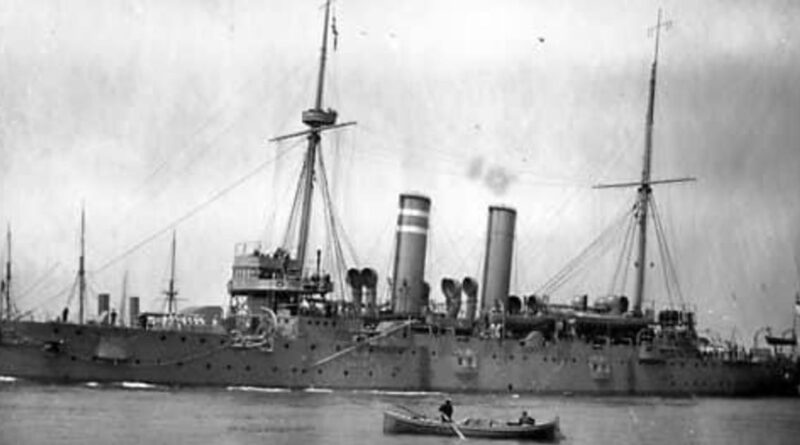Wreck believed to be WWI ship that sank with over 500 sailors found in “remarkable” condition
A group of divers working off the coast of Scotland found the wreck of what’s believed to be a World War I ship that sank with more than 500 sailors on board.
The HMS Hawke was torpedoed by a German U-boat on October 15, 1913, according to Lost in Waters Deep, a U.K. agency that memorializes naval losses from World War I. The Royal Navy warship caught fire and sank in fewer than eight minutes, according to CBS News partner the BBC, with just 70 sailors surviving. In total, 524 sailors died when the ship sank near northern Scotland.
Lost in Waters Deep
A “group of very experienced technical divers” determined the site where they believe the Hawke sank, Lost in Waters Deep said. They dove to the wreck, which is about 360 feet underwater, on August 11.
Diver Steve Mortimer told the BBC the team identified the wreck site with a variety of research methods. He and other team members reviewed the day journal of the U-boat commander, which gave them an idea of where the ship had been when it fired the torpedo at the Hawke and looked at logs of other ships that communicated with the Hawke before its sinking.
Lost in Waters Deep
The team also reviewed reports of an “obstruction” in the area reported by Scottish fisheries in the 1980s. Divers found nothing at the obstruction site, but the large shipwreck was discovered less than a mile away.
“It took years of research, but the actual time on the ground was just a few hours,” Mortimer told the BBC.
The wreckage will be formally identified by the Royal Navy in the coming weeks, the BBC reported. Mortimer called the wreck a “really remarkable time capsule.”
Simon Kay/Lost in Waters Deep
“There is a wonderful captain’s walkway around the back of the stern. There’s loads of guns because obviously she was a warship,” Mortimer told the BBC. “There’s lots of Royal Navy crockery. It is fascinating. She clearly was taken completely by surprise because lots of the portholes are still open … You can look into the portholes and see rooms with artifacts – teacups, bowls and plates just there on the floor.”








